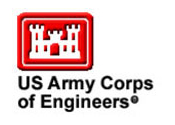
U.S. Army Corps of Engineer resets operating parameters of electric barriers in the Chicago Area Waterway System
FOR IMMEDIATE RELEASE
November 28, 2011
Contact:
Lynne Whelan 312-846-5330
Lynne.e.whelan@usace.army.mil
CHICAGO – The U.S. Army Corps of Engineers (USACE) announced today they will return the operating parameters of the electric barrier to the higher operating parameters established in October 2011.
The barrier had been temporarily reset to pre-October 2011 settings while USACE investigated possible interference with railroad signals adjacent to the barrier site.
Technical experts from USACE (and contractors) worked with railroad representatives to determine potential causes. Engineers at the barrier site were able to identify a piece of equipment that was contributing to the issue. The equipment has been reconfigured to avoid interference with the railroad signals.
The operating parameters of 2.3 volts, 30 hertz and 2.5 milliseconds are expected to go into effect on November 29, 2011.
USACE continues to work in partnership with the U.S. Coast Guard and other members of the Asian Carp Regional Coordinating Committee to ensure both safe and effective operation of the electric barrier system and continued progress on all Asian carp efforts.
"The Corps remains committed to operating the barriers safely and effectively," said Colonel Frederic Drummond, Commander, U.S. Army Corps of Engineers, Chicago District. "We have high confidence in the effectiveness of the barriers and continue to work with our partners and stakeholders to assess the Asian carp threat and make informed decisions regarding barrier operations."
It is important to note that all evidence strongly indicates that very small Asian carp are not close to the vicinity of the fish barrier, and in fact have been observed at locations of verified spawning 152 miles away from Lake Michigan. Expanded use of ultrasonic telemetry to determine fish behavior near the electric fields has shown that of more than 2.7 million detections of tagged surrogate fish in the barrier area, no tagged fish have crossed any of the electric barriers in the upstream direction.
"Nevertheless, as long as the electric dispersal barriers can be operated in a safe manner, I intend to operate Barrier II at the higher operating parameters as a conservative precaution," Drummond said.
In collaboration with other federal and state partners in the Asian carp Regional Coordinating Committee (ACRCC), the Corps continues to make significant progress in improving the scientific and technical knowledge of the complex variables at play with Asian carp in the Chicago Area Waterways, especially in regards to the electric barrier, Asian carp monitoring and improving our knowledge of eDNA. The Corps remains committed to remaining transparent and responsive to the public's concern about the Asian carp threat to the Great Lakes.
For additional information, please visit the Chicago District website at www.lrc.usace.army.mil or contact the Public Affairs Office at (312) 846-5330.
